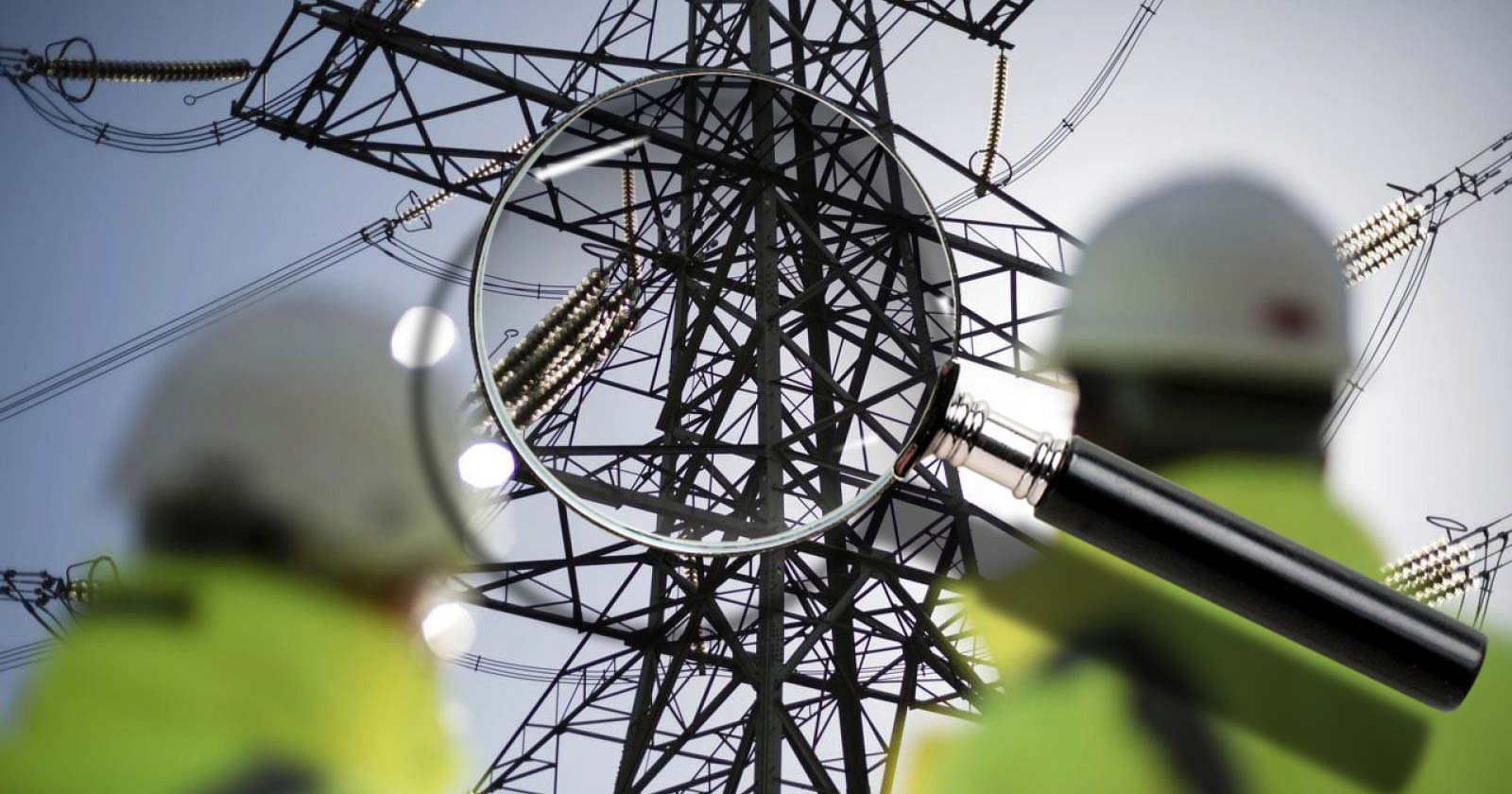The latest revelations from the controversial Western Renewables Link (WRL)

The discovery of apparent non-compliances and major errors in the WRL cost-benefit test
The latest revelation from the controversial Western Renewables Link (WRL), a proposed large-scale transmission project in Western Victoria, is the discovery of apparent non-compliances and major errors in the WRL Project Assessment Conclusions Report (PACR), a cost-benefit test that allowed the WRL to progress to its current stage of development. Apparent non-compliances and errors have also been discovered in the Australian Energy Market Operator's (AEMO's) more recent Review of the WRL cost benefit analysis conducted under the National Electricity Rules.
According to recent reports by Professor Simon Bartlett AM, an expert with forty years’ experience in the power industry in electricity transmission, power systems and generation in Australia, Europe and Canada, there are apparent non-compliances in the application of the Regulatory Investment Test for Transmission (RIT-T), National Electricity Rules (NER) Chapter 5.15 and 5.16 and the AER Guidelines for application of the RIT-T to non-actionable projects (Guidelines) in the WRL PACR and updated WRL cost benefit assessment (WRL assessments), and in particular Clause A5 of the Guidelines.
In addition to at least 15 apparent non-compliances, Professor Bartlett has also identified significant apparent errors in the WRL cost benefit test by analysing publicly available data (spreadsheets) that calculated the Net Present Value (NPV) of costs and benefits crucial to the RIT-T financial assessments for the WRL PACR.
Professor Bartlett’s reports can be found here:
APPARENT NON-COMPLIANCES IN WRL PACR AND UPDATED WRL COST-BENEFIT ASSESSMENT
APPARENT NON-COMPLIANCES AND MAJOR ERRORS IN WRL PACR
The reports indicate that a spreadsheet error which omitted ~93% of the operation and maintenance (O&M) costs for both options for 50 years must be rectified. This adjustment alone would reduce the net benefits of the WRL PACR’s preferred option (C2) to negative $26m NPV (i.e. $151m - $177m) and the net benefits of the second most credible option (B3) net benefits to negative $76m NPV (i.e. $69m - $145m).
The reports also indicate there is no doubt that a $115m market benefit incorrectly credited to C2 for deferring its own $235m investment in its 500kV assets (Ballarat North to Sydenham) should be removed as this investment must clearly be made when C2 is built and there is no second investment in these same assets by the proposed VNI West interconnector to be deferred. This would further reduce the net benefits of C2 by $115m to negative $141m NPV.
Other reductions in net benefits totalling another $163m NPV for C2 and $121m NPV for B3, suggests that the PACR should have concluded neither C2 nor B3 would deliver a positive net benefit and that neither should have been selected as the preferred option.
According to Professor Bartlett, proceeding with regulated transmission projects that have a significant negative net benefit could be contrary to the National Electricity Objective.
These findings come as little surprise to communities impacted by the proposed WRL. Community groups, led by the Moorabool and Central Highlands Power Alliance Inc. (The Alliance), have been campaigning for reapplication of the RIT-T for in excess of two years. In August 2022, The Alliance sought a decision from AEMO that due to significant material changes in circumstances C2 is no longer the preferred option and it’s in the public interest undertake a new cost benefit analysis.
In response to The Alliance request, AEMO initiated the Review of the WRL cost benefit analysis in November 2022, confirming claims that various changes in circumstances had occurred which could impact upon the assessment of market benefits for the WRL Project. Even so, based on the analysis in this document (analysis which is not supported by publicly available data), AEMO remained of the opinion that Option C2 remains the preferred option with higher net market benefits than Option B3.
These apparent non-compliances and major errors have potential to completely derail the WRL which has already experienced significant delays and is slowly progressing through the Environmental Effects Statement (EES) process. The WRL is already two years behind its expected 2025 commissioning year.
Given the serious consequences of these apparent non-compliances and major errors, Professor Bartlett has raised these matters with AEMO for further investigation and discussion. AEMO has advised that due to recent legal proceedings initiated by the Moorabool and Central Highlands Power Alliance Inc. in the Supreme Court of Victoria, AEMO is not in a position to respond to these matters.
While the community, market participants and stakeholders appreciate the sensitivities of a legal challenge, these proceedings should not prevent AEMO from addressing the apparent non-compliances and errors that have been identified in Professor Bartlett’s reports.
If these apparent non-compliances and errors are not addressed, maybe litigation will represent the the greatest challenge to AEMO's cost benefit analysis methodology, with accountability for appropriate transmission investment investigations left to the courts to determine.
Author of Reports

Professor Simon Bartlett AM
BE, BSc, FIEAust, FTSE, FAICD, MIEEE, CPEng
Industry Background
Simon has seven years’ experience as an Australian university professor and forty years’ experience in the power industry in electricity transmission, power systems and generation in Australia, Europe and Canada. His experience includes planning, design, construction, system operations, asset management, regulation, leadership and board directorship.
Recent Past Roles
- Consultant for pumped storage investigations and expert witness
- API/Powerlink Australian Chair of Electricity Transmission, Univ of Qld
- Chief Operating Officer, Powerlink Queensland
- Board Director, Electranet SA
- Chairman, Australian Power Institute
Awards
- Commendation for Cyclone Larry Leadership, Prime Minister and Qld Premier, 2006
- Sir Lionel Hooke Award, IET Australia, 2007
- Queensland Electrical Engineer of the Year, IEAust,2008
- Queensland Engineer of the Year, IEAust, 2009
- Australian Professional Engineer of the Year, IEAust, 2009
- Member of the Order of Australia for services to Australia’s Power Industry, 2012
Abbreviations found in WRL and VNI West Reports
WRL: Western Renewables Link
WRL PACR: Western Victoria RIT-T Project Assessment Conclusions Report
VNI West: Victoria to New South Wales Interconnector West
VNI West PADR: Victoria to New South Wales Interconnector West Project Assessment Draft Report
WRL Cost Benefit Assessment: Western Renewables Link project - analysis conducted under the National Electricity Rules
RIT-T: Regulatory Investment Test for Transmission (August 2020)
NER: National Electricity Rules
NEL: National Electricity Law
Guidelines: Application Guidelines Regulatory Investment Test for Transmission (2020) and Cost Benefit Analysis Guidelines to make the Integrated System Plan Actionable (2020)
ISP: 2022 Integrated System Plan (ISP)
O&M: Operation and Maintenance
NPV: Net Present Value
C2: Preferred credible option identified in the WRL PACR
B3: Second most credible option identified in the WRL PACR

